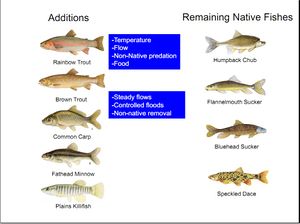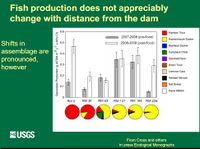Difference between revisions of "FISH"
Cellsworth (Talk | contribs) |
Cellsworth (Talk | contribs) |
||
| Line 6: | Line 6: | ||
{| style="width:100%; background:#fcfcfc; margin-top:1.2em; border:1px solid #ccc;" | {| style="width:100%; background:#fcfcfc; margin-top:1.2em; border:1px solid #ccc;" | ||
|style="width:25%; color:#000"| <!-- | |style="width:25%; color:#000"| <!-- | ||
| − | + | ||
-----------'''Welcome to the ENERGY SERVICES GROUP HOME PAGE'''----------> | -----------'''Welcome to the ENERGY SERVICES GROUP HOME PAGE'''----------> | ||
<table class=MsoTableGrid border=0 cellspacing=0 cellpadding=0 | <table class=MsoTableGrid border=0 cellspacing=0 cellpadding=0 | ||
| Line 12: | Line 12: | ||
<tr style='mso-yfti-irow:0;mso-yfti-firstrow:yes'> | <tr style='mso-yfti-irow:0;mso-yfti-firstrow:yes'> | ||
<td width=40% valign=bottom align=left style='width:2.05in;padding:0in 5.4pt 0in 5.4pt'> | <td width=40% valign=bottom align=left style='width:2.05in;padding:0in 5.4pt 0in 5.4pt'> | ||
| − | <p class=MsoNormal>[ | + | <p class=MsoNormal>[]</p> |
</td> | </td> | ||
</tr> | </tr> | ||
| Line 22: | Line 22: | ||
|style="width:60%; font-size:95%;"| | |style="width:60%; font-size:95%;"| | ||
'''Description''' | '''Description''' | ||
| + | |||
| + | [[File:Additions and Remaining Native Fishes Slide 9.jpg |thumb]] | ||
The Colorado River running through Grand Canyon once hosted one of the most distinctive fish assemblages in North America. The wild Colorado River presented fish with a challenging and variable aquatic habitat: very large spring floods, near-freezing winter temperatures, warm summer temperatures, and a heavy silt load. | The Colorado River running through Grand Canyon once hosted one of the most distinctive fish assemblages in North America. The wild Colorado River presented fish with a challenging and variable aquatic habitat: very large spring floods, near-freezing winter temperatures, warm summer temperatures, and a heavy silt load. | ||
| − | Note that only eight fish species were native to Grand Canyon. Of the eight species, six are endemic, meaning that they are only found in the Colorado River basin. (NPS) | + | Note that only eight fish species were native to Grand Canyon. Of the eight species, six are endemic, meaning that they are only found in the Colorado River basin. (NPS) |
| Line 44: | Line 46: | ||
! <h2 style="margin:0; background:#cedff2; font-size:120%; font-weight:bold; border:1px solid #a3bfb1; text-align:left; color:#000; padding:0.2em 0.4em;">GROUP MEMBERS</h2> | ! <h2 style="margin:0; background:#cedff2; font-size:120%; font-weight:bold; border:1px solid #a3bfb1; text-align:left; color:#000; padding:0.2em 0.4em;">GROUP MEMBERS</h2> | ||
No Ad-Hoc Group currently assigned | No Ad-Hoc Group currently assigned | ||
| − | + | ||
|- | |- | ||
| Line 63: | Line 65: | ||
---- | ---- | ||
===''Quick Facts''=== | ===''Quick Facts''=== | ||
| − | |||
| − | |||
| − | |||
| − | |||
| − | |||
*'''75%''' of the fish species were endemic to the Colorado River basin; this is the highest degreee of endemism of any large river basin in North America. (SDM Workshop Aug 2013) | *'''75%''' of the fish species were endemic to the Colorado River basin; this is the highest degreee of endemism of any large river basin in North America. (SDM Workshop Aug 2013) | ||
===''Work in progress''=== | ===''Work in progress''=== | ||
| − | + | ||
| − | + | ||
| Line 109: | Line 105: | ||
*[[GCDAMP RAZU Fish| Razerback Sucker Page]] | *[[GCDAMP RAZU Fish| Razerback Sucker Page]] | ||
*[[GCDAMP Bonytail Fish| Bonytail Page]] | *[[GCDAMP Bonytail Fish| Bonytail Page]] | ||
| − | *[[Lees_Ferry_Sport_Fishery| | + | *[[Lees_Ferry_Sport_Fishery| Trout Page]] |
| + | *[[Green_Sunfish_Page| Green Sunfish Page]] | ||
*[http://www.gcdamp.gov/keyresc/nf.html GCDAMP POAHG- Historical Native Fishes of Glen and Grand Canyon] | *[http://www.gcdamp.gov/keyresc/nf.html GCDAMP POAHG- Historical Native Fishes of Glen and Grand Canyon] | ||
* | * | ||
| Line 117: | Line 114: | ||
|- | |- | ||
|style="color:#000;"| | |style="color:#000;"| | ||
| + | |||
2015 | 2015 | ||
*[http://www.usbr.gov/uc/rm/amp/twg/mtgs/15jan20/Attach_10.pdf/ Native and Nonnative Interactions; Factors Influencing Predation and Competition] | *[http://www.usbr.gov/uc/rm/amp/twg/mtgs/15jan20/Attach_10.pdf/ Native and Nonnative Interactions; Factors Influencing Predation and Competition] | ||
| + | *[http://www.usbr.gov/uc/rm/amp/twg/mtgs/15jan20/Attach_17.pdf/ Quagga Mussel Risk Assessment] | ||
|- | |- | ||
| Line 126: | Line 125: | ||
*[http://www.nps.gov/grca/naturescience/upload/grca_fish_list.pdf NPS Fish Species found in the Grand Canyon] | *[http://www.nps.gov/grca/naturescience/upload/grca_fish_list.pdf NPS Fish Species found in the Grand Canyon] | ||
*[http://www.nps.gov/grca/naturescience/upload/grca_vertebrate_list.pdf NPS Grand Canyon Vertebrate Species List] | *[http://www.nps.gov/grca/naturescience/upload/grca_vertebrate_list.pdf NPS Grand Canyon Vertebrate Species List] | ||
| − | *[http://www.nps.gov/grca/naturescience/upload/threat-endanger.pdf NPS Grand Canyon | + | *[http://www.nps.gov/grca/naturescience/upload/threat-endanger.pdf NPS Grand Canyon Threatened & Endangered Species List] |
| − | + | ||
| − | + | ||
| − | + | ||
| − | + | ||
| Line 138: | Line 134: | ||
|} | |} | ||
| − | + | ||
| − | + | ||
| − | + | ||
| − | + | ||
<Span></Span> | <Span></Span> | ||
Revision as of 12:21, 7 January 2016
|
Description The Colorado River running through Grand Canyon once hosted one of the most distinctive fish assemblages in North America. The wild Colorado River presented fish with a challenging and variable aquatic habitat: very large spring floods, near-freezing winter temperatures, warm summer temperatures, and a heavy silt load. Note that only eight fish species were native to Grand Canyon. Of the eight species, six are endemic, meaning that they are only found in the Colorado River basin. (NPS)
|
| Fish Species of the Colorado River in Lower Glen Canyon and Grand Canyon (See Fish Table) |
TBD (TBD) |
TBD (TBD) |
|---|
|
|

